Do you know the divine power of Dasapushpam – the ten sacred herbs-flowers give a healthy mind, body and soul.
August 15th, 2011 | admin
It is a mixture of ten sacred flowers having many curative properties. More than flowers the entire plant is considered in this group and is widely used in ayurveda. The herbs are used effectively in home remedies because of their medicinal properties and their ability to cure in a natural way. Women of Kerala wear these herbs on the month of Karkidaka as it is said to benefit their health. The position of sun has a great influence on the atmosphere and health of living beings. The movement of sun from north to south is termed as the uttarayana period and the movement from south to north is called dakshinayana period. According to the Malayalam calendar the month of makaram to midhunam marks the uttarayana period and karkidaka to dhanu is dakshinayana period. The month of Karkidaka is supposed to be a period in which diseases are more prominent and the body has little resistance against diseases. Hence the use of these herbs with huge curative properties during the month of Karkidaka has its own significance. A detailed description of the herbs is given below.
Vernonia cinerea- puvankurunthal.
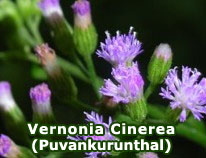 Vernonia Cineria is a terrestrial annual herb. The plant has erect and cylindrical stems. Leaves are ovate or lanceolate. The flowers are either white or purple in color and occur in small head inflorescence. The plant grows in waste lands, open fields and road sides. New plants grow from the seeds which are dispersed by wind. Vernonia Cinerea is often known as poor man’s herb. According to ayurveda the herb has tikta rasa, rooksha guna and ushna veerya.
Vernonia Cineria is a terrestrial annual herb. The plant has erect and cylindrical stems. Leaves are ovate or lanceolate. The flowers are either white or purple in color and occur in small head inflorescence. The plant grows in waste lands, open fields and road sides. New plants grow from the seeds which are dispersed by wind. Vernonia Cinerea is often known as poor man’s herb. According to ayurveda the herb has tikta rasa, rooksha guna and ushna veerya.
The herb is known to pacify vata and pitta. The whole plant is useful and has got many curative properties. It is used to cure tonsillitis, stomach ailments etc. the plant is crushed and the juice is made to a decoction by boiling with water which is used to treat fever. The juice extracted from the leaves is mixed with cow’s milk and is used to treat conjunctivitis. A decoction made out of the roots cures swellings and inflammations. The juice is also effective in treating poisonous insect bites. It is also capable of purifying the blood. The seeds contain fatty oil which is used as an anthelmintic. It is also beneficial in flatulence and intestinal colic. The herb is used to cure problems related to skin like leucoderma and other skin diseases.
Biophytum sensitivum-mukkutti.
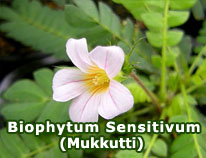 The plant belongs to the family Oxalidaceae. It is a flowering perennial herb which thrives well in tropical and sub tropical climate. The plant has a very short unbranched stem and the pinnate leaves with small leaflets on either side arise from the tip of the stem. Flowers occur in and are pale yellow to orange in color with five petals .Seeds is enveloped by a stiff and flexible fleece. The plant propagates by means of seeds.
The plant belongs to the family Oxalidaceae. It is a flowering perennial herb which thrives well in tropical and sub tropical climate. The plant has a very short unbranched stem and the pinnate leaves with small leaflets on either side arise from the tip of the stem. Flowers occur in and are pale yellow to orange in color with five petals .Seeds is enveloped by a stiff and flexible fleece. The plant propagates by means of seeds.
The plant is believed to posses many medicinal properties. The herb has astringent, antiseptic, antipyretic and diuretic properties. According to ayurveda the herb has tikta and kasaya rasa lakhu and rooksha guna and ushna veerya. The herb is known to pacify Kapha and pitta. It is used to treat conditions like arthritis, sprain, stiff neck etc. It is one of the herbs which is given to women after delivery because of its ability to clean the uterus .It is also used in cases of heavy bleeding in women. A paste made of the leaves mixed with butter milk is used in cases of diarrhea. The whole plant is crushed and the juice mixed with honey is administered in cases of cough and chest congestion.
Emilia sonchifolia- muyalchevi.
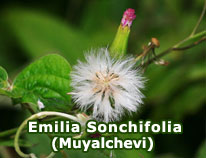 Emilia sonchifolia belongs to the family Asteraceae. It is commonly known as cupid’s shaving brush. The plant requires well drained soil and is drought resistant once they are established. It is an annual herb with weak or erect stems. Leaves are ovate or obovate. The plant flowers from July to October. The flowers are lavender, purple or pink in color. It occurs in open fields and waste lands. It contains calcium, phosphorous magnesium, sodium and potassium. It contains vitamins like riboflavin and niacin. The herb is used as a folk medicine. According to ayurveda the plant has katu, kasaya and tikta rasa, lakhu and grahi guna healer sheeth veerya.
Emilia sonchifolia belongs to the family Asteraceae. It is commonly known as cupid’s shaving brush. The plant requires well drained soil and is drought resistant once they are established. It is an annual herb with weak or erect stems. Leaves are ovate or obovate. The plant flowers from July to October. The flowers are lavender, purple or pink in color. It occurs in open fields and waste lands. It contains calcium, phosphorous magnesium, sodium and potassium. It contains vitamins like riboflavin and niacin. The herb is used as a folk medicine. According to ayurveda the plant has katu, kasaya and tikta rasa, lakhu and grahi guna healer sheeth veerya.
The plant pacifies Kapha, vata and is effective in treating fever, tonsillitis; juice is a natural for eye diseases. It is also good in conditions like worm infections and allergy. Whole plant is crushed and the juice is extracted and is used to cure intestinal worms. The paste of the plant is useful for bleeding piles. A decoction of the plant is good in bringing down fever. The herb is useful in treating cough and bronchitis. Applying a paste on the thyroid region helps to cure the swelling in is sometimes used in cases of diabetes.
Cynodon dactylon- karuka.
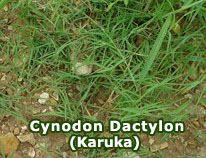 The plant belongs to the family Poaceae. The plant grows in warm climate all over the world. The plant has creeping stems bearing roots at the nodes. It grows and forms a dense mat helping to prevent soil erosion. The leaves are grayish green in color and flowers are very small and are in spikes. The grass is considered important in Hinduism and is dedicated to Lord Ganesh. It symbolizes purity and prosperity. It contains crude proteins, magnesium, phosphorous, calcium, sodium and potassium.
The plant belongs to the family Poaceae. The plant grows in warm climate all over the world. The plant has creeping stems bearing roots at the nodes. It grows and forms a dense mat helping to prevent soil erosion. The leaves are grayish green in color and flowers are very small and are in spikes. The grass is considered important in Hinduism and is dedicated to Lord Ganesh. It symbolizes purity and prosperity. It contains crude proteins, magnesium, phosphorous, calcium, sodium and potassium.
The plant has antiviral and antimicrobial properties. The plant has been suggested for treatment of urinary track infections, skin diseases, blood disorders, dysentery and prostatitis .Recent studies shows that the herb is able to reduce blood sugar level in blood. The juice is cool, sweet and palatable and is nutritious. The whole plant is medicinal and used externally and internally. The plant extract is used to relieve discomforts caused due to phlegm. The cooling property of the plant enables it to mitigate thirst and burning sensation. It works as a detoxifying agent when taken in empty stomach. The herb mixed with curd is used in leucorrhea. It helps in curing minor cuts and wounds. In general it is a good tonic for the body.
Curculigo orchioides- nilapana.
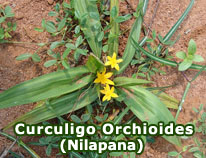 The plant is a perennial herb which belongs to the family Amaryllidaceae. It occurs commonly in temperate climate and is commonly seen in south India. The plant is widely used in folk medicine. The rhizome of the plant is used for medicinal purposes. The herb has madhura and tikta rasa a, guru guna and sheeta veerya. It increases kapha and reduces vata and pitta.
The plant is a perennial herb which belongs to the family Amaryllidaceae. It occurs commonly in temperate climate and is commonly seen in south India. The plant is widely used in folk medicine. The rhizome of the plant is used for medicinal purposes. The herb has madhura and tikta rasa a, guru guna and sheeta veerya. It increases kapha and reduces vata and pitta.
It is used in digestive, respiratory, urinary and reproductive problems. The herb is found to be beneficial in cases of cough and asthma. It works and a stimulant and aids digestion. It is also used in cases of vomiting and diarrhea. The herb is widely used in treating erectile dysfunction and to increase the sperm count. The plant is beneficial in treating piles and blood related disorders. It is also good in skin related ailments.
Evolvulus ulcinoides- vishnukranti.
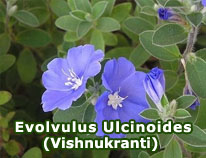 The herb belongs to the family Convolvulaceae. It is an annual creeper and grows in open grassy places throughout India. The leaves are small and are covered with fine hairs. The plant pacifies pitta and is katu and tikta in rasa, rooksha and teekshna in guna and ushna in veerya. The flowers are blue in color. The fruits appear in small capsules.
The herb belongs to the family Convolvulaceae. It is an annual creeper and grows in open grassy places throughout India. The leaves are small and are covered with fine hairs. The plant pacifies pitta and is katu and tikta in rasa, rooksha and teekshna in guna and ushna in veerya. The flowers are blue in color. The fruits appear in small capsules.
The herb has astringent properties and is believed to improve intelligence and memory power and is considered as a brain tonic. It is also considered as a pshycostimulant and tranquilizer. The herb is used externally and internally. The juice of the plant stimulates appetite and is also used as a mild laxative. It is effective in treating premature graying and falling of hair. A decoction of the herb with cumin and milk is found to be beneficial in cases of fever. In general it works as a good tonic for the body.
Eclipta alba- kayyonni.
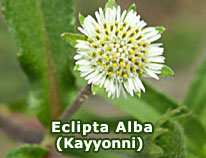 Eclipta alba which is commonly known as Bhringaraj and kayyoni belongs to the family Asteraceae. It grows in moist places and has week steams. Flowers are white in color.
Eclipta alba which is commonly known as Bhringaraj and kayyoni belongs to the family Asteraceae. It grows in moist places and has week steams. Flowers are white in color.
The whole plant is considered of medicinal value. It is useful in cases of Kapha and vata imbalances. It is effectively used in treating conditions like premature graying and hair fall .Regular application of oil prepared using this herb renders the hair black and luxuriant. It acts as a powerful liver tonic and is also useful in jaundice and spleen disorders. It is also used against anemia and eye diseases .The extract of Eclipta and honey is used in cases of respiratory congestion. It is also used to enhance the memory and as an anti ageing agent. It is also effective in treating minor burns and cuts.
Avera lanata- cheroola.
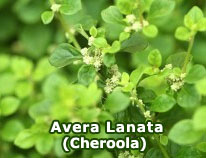 The plant is a woody, perennial herb belonging to the family Amaranthaceae. It is a common weed and grows widely in plains. It has tikta rasa, lakhu and snigda guna and sheeta veerya. The plant is known to pacify pitta.
The plant is a woody, perennial herb belonging to the family Amaranthaceae. It is a common weed and grows widely in plains. It has tikta rasa, lakhu and snigda guna and sheeta veerya. The plant is known to pacify pitta.
The plant is said to posses’ diuretic properties and is used as an anthelmintic. It is used to cure sore throat. The herb consists of phenol acids and alkaloids. Roots are used in headache. The leaves are also used as a vegetable.
Ipomea maxima- thiruthali.
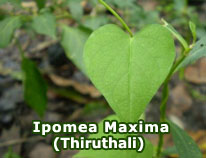 The plant belongs to the family Convolvulaceae.It is a small climbing herb with a bell shaped flower. The plant posses cooling and aphrodisiac properties. Juice of the plant is used as a diuretic and deobstruent. The juice is also used as a herbal shampoo. It is also used as an antidote for arsenic poison.
The plant belongs to the family Convolvulaceae.It is a small climbing herb with a bell shaped flower. The plant posses cooling and aphrodisiac properties. Juice of the plant is used as a diuretic and deobstruent. The juice is also used as a herbal shampoo. It is also used as an antidote for arsenic poison.
Cardiospermum halicacabum- valli uzhinja.
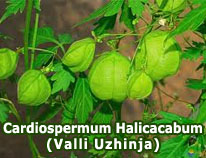 The plant is a perennial climber with dentate leaflets and small white flowers. Fruits are covered with a bladder and the seeds are globose. It is well known for its huge curative properties. The plant extract has anti-inflammatory and analgesic properties. It is used in treating earaches and in relieving swellings. The juice is also used in curing minor wounds. The juice is said to reduce obesity. The herb is also used in hair oil preparations to reduce dandruff and for darkening the hair. The herb also has laxative properties.
The plant is a perennial climber with dentate leaflets and small white flowers. Fruits are covered with a bladder and the seeds are globose. It is well known for its huge curative properties. The plant extract has anti-inflammatory and analgesic properties. It is used in treating earaches and in relieving swellings. The juice is also used in curing minor wounds. The juice is said to reduce obesity. The herb is also used in hair oil preparations to reduce dandruff and for darkening the hair. The herb also has laxative properties.




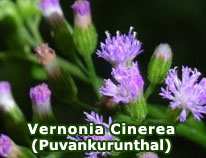
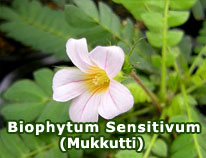
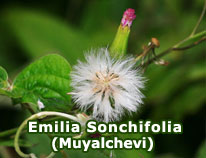
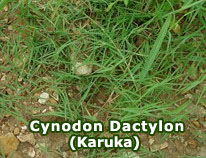
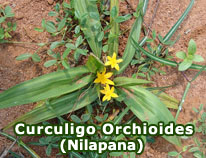
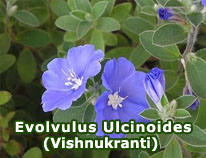
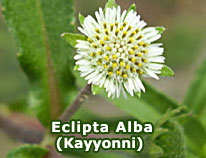
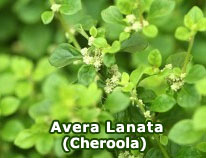
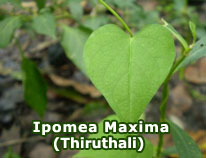
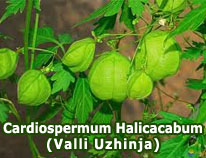
 Loading ...
Loading ...





